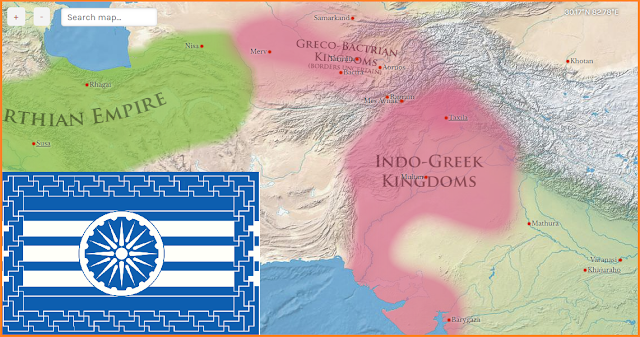The Euthydemids were a Greco-Bactrian and Indo-Greek dynasty of approximately 25 kings, named after its founder Euthydemos. The dynasty lasted between circa 230 BCE and 10 BCE, according to numismatic evidence. The coin images which are typical of the Euthydemids are Athena Alkidemos [Defender of the peoples] and Heracles. Euthydemos became king by overthrowing the Greco-Bactrian king Diodotos II circa 230 BCE. He then managed to resist the Seleucid king Antiochos III, who eventually recognized Euthydemos as the King of Bactria. He and his son Demetrios began to conquer India and thus became famous. They are mentioned by Greek and Latin classical historians, while their successors were divided since 190 BCE and, with some exceptions such as the early Indo-Greek kings Agathocles and Pantaleon, fell into oblivion. Around 171 BCE, the Euthydemid dominion of Greco-Bactrian and Indo-Greek Kingdoms was shaken by the rebellion of Eucratides, who quickly conquered most regions, with the exception of the lands of king Menander.
From then on, the Euthydemid and Eucratid dynasties were constantly at war with each other; this went on for 90 long years and literally tore the Greco-Bactrian and Indo-Greek kingdoms apart. The powerful King Menander succeeded to push Eucratides back to Bactria around 155 BCE, but the Euthydemids never fully regained control of Bactria. When the Yuezhi invaded Bactria circa 145 BCE, the Eucratids retreated into the Indo-Greek possessions. The Euthydemid presence remained in India until 80 BCE, when both dynasties faced serious problems from the powerful Indo-Saka king Maues. In order to defend themselves against Maues, the two Greek dynasties seem to have created an alliance, whose leader was Amyntas.














No comments:
Post a Comment